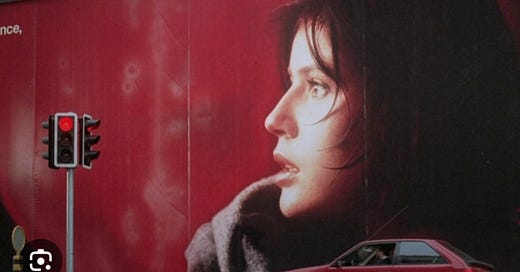Three Colours: Red
This is the third and final part of director Krzysztof Kieslowski’s masterful trilogy, and, for me, the most captivating and powerful. While the first was loosely about liberty and the second about equality, this third film could be said to touch on fraternity, in the form of supportive friendship and platonic love. It is written by the same trio who wrote all three films: Kieslowski himself together with long-term collaborators Krzysztof Piesiewicz and Agnieszka Holland, with a soundtrack again by the great Zbigniew Preisner.
This film became a fitting epitaph for Kieslowski: after making it, he announced that he was retiring from filmmaking, but changed his mind, only to become ill and die. So it seems his last feature film is also his best, which is the right way to do it. It’s tragic that he died at the peak of his powers.
As with the other two films, the cinematography is saturated with the colour of the title. Where Blue was cloaked in hues of mysterious blue, with frequent shots of a blue swimming pool, and White featured the snow-covered Polish countryside and the white of coveted land deeds, Red never strays too far from burning, passionate red, whether it’s the giant poster of the protagonist against a red background advertising bubble gum or the implied red of forbidden behaviour by those who should know better.



